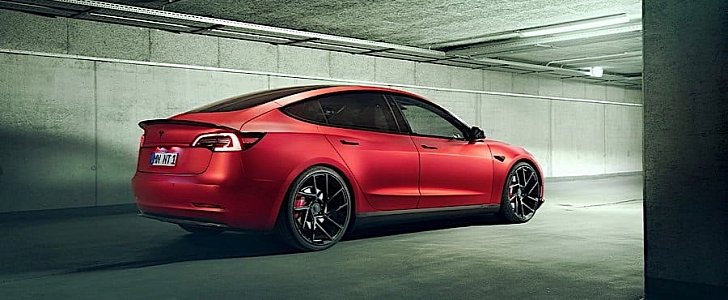The U.S. economy is fairly strong right now, and low unemployment also translates to more disposable income. When it comes to passenger cars, the third quarter of 2019 has seen a steady decline in sales and deliveries well. This trend has also affected new energy vehicles, which fell by 18 percent compared to the third quarter of 2018. And this state of affairs is attributed to “a severe lack of choice.”
Canalys tracked the sales performance of more than 300 models from 40 car brands in this period, and as you’d expect from the United States of America, customers are more inclined to buy pickup trucks, SUVs, and crossovers. “Deliveries of the market-leading Tesla Model 3 have peaked, but there is nothing new from the competition to challenge it,” declared Chris Jones, chief analyst at Canalys.
Does it come as a surprise that Tesla sits high and above when the Model 3 doesn’t have any proper rival in its segment? The EV automaker from Palo Alto is riding high despite an overall contraction of 1.3 percent year-on-year, but nevertheless, a market share of 60 percent stands as proof that Tesla has yet to be rivaled.
Canalys estimated that “only 90,000 NEVs were delivered in Q3 2019,” representing 2.2 percent of total passenger car deliveries in the quarter. By new energy vehicles, the analyst company refers to plug-in hybrids, full electrics, and fuel-cell vehicles. Mild hybrids and hybrids weren’t taken into consideration.
Another reason for the poor performance of passenger cars and NEVs is urbanization. Youngsters moving to big cities for employment have plenty of expenses to tackle on a monthly basis, and owning an under-utilized car would be too much for them at this point in their lives. As such, urban mobility solutions such as ride hailing or a bicycle make a lot more sense given their limited budget.
More choices in the segment that Tesla operates would be a godsend for electric-vehicle development, and even Tesla should reassess its pricing strategy as we head into the 2020s. The most affordable Model 3 retails at $39,490 excluding potential savings, which is two grand more than the average transaction price in the U.S. of A.
Remember when Elon Musk promised that the Model 3 would cost $35,000 for the entry-level specification? Pepperidge Farm remembers…
Does it come as a surprise that Tesla sits high and above when the Model 3 doesn’t have any proper rival in its segment? The EV automaker from Palo Alto is riding high despite an overall contraction of 1.3 percent year-on-year, but nevertheless, a market share of 60 percent stands as proof that Tesla has yet to be rivaled.
Canalys estimated that “only 90,000 NEVs were delivered in Q3 2019,” representing 2.2 percent of total passenger car deliveries in the quarter. By new energy vehicles, the analyst company refers to plug-in hybrids, full electrics, and fuel-cell vehicles. Mild hybrids and hybrids weren’t taken into consideration.
Another reason for the poor performance of passenger cars and NEVs is urbanization. Youngsters moving to big cities for employment have plenty of expenses to tackle on a monthly basis, and owning an under-utilized car would be too much for them at this point in their lives. As such, urban mobility solutions such as ride hailing or a bicycle make a lot more sense given their limited budget.
More choices in the segment that Tesla operates would be a godsend for electric-vehicle development, and even Tesla should reassess its pricing strategy as we head into the 2020s. The most affordable Model 3 retails at $39,490 excluding potential savings, which is two grand more than the average transaction price in the U.S. of A.
Remember when Elon Musk promised that the Model 3 would cost $35,000 for the entry-level specification? Pepperidge Farm remembers…

























